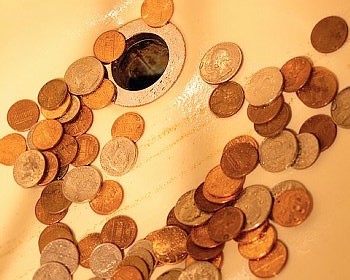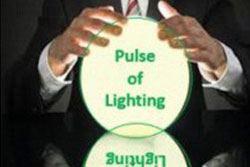Could Tariffs, Masquerading as Price Increases, Be Good for the Electrical Industry?
 2018 may go down as the year of tariffs. Earlier in the year tariffs were implemented on steel and aluminum. In July the first round of tariffs targeting Chinese products found its way into the industry while there have been extensive discussions about what tariffs could do to the lighting market.
2018 may go down as the year of tariffs. Earlier in the year tariffs were implemented on steel and aluminum. In July the first round of tariffs targeting Chinese products found its way into the industry while there have been extensive discussions about what tariffs could do to the lighting market.
To paraphrase Paul Revere, “the tariffs are here, the tariffs are here!”
September 24th is the date of that the next rounds of tariffs go into effect. Many manufacturers have spent countless hours evaluating the impact on their business. Cost accountants have determined which products come from where, what the assemblies are and manufacturers have contemplated the impact on their supply chain. Sales management has spent hours determining which products to increase by how much or should they have broad-based increases and how to communicate the increases.
How to Communicate
This last piece, of how to communicate the increase, could have the most lasting impact, within the industry.
Distributors have been, and will continue to be, inundated with price increase notifications. They are racing to input into their system, determine the impact of quotes and explaining “why” to their customers.
Many customers understand given that the public media regularly mentions tariffs, however, many do not understand the products that are impacted.
Some distributors need to be nuanced in their presentation as accounts that have contracts with them may have clauses that do not allow for price increases (negotiated agreements). Similarly, there are distributors, and marketing groups, that require manufacturers to give them 60 or 90 days advance notice of a price increase so in some cases these increases will not show up as incremental costs to the distributor for a bit (and they can use their current costs to either take share or increase their selling price to the “new” market price and improve profitability.)
The Benefits
- There is a difference communicating an increase as a surcharge due to a tariff (similar to fuel surcharges) rather than a price increase. A surcharge is a definable amount attributed to a specific input cost that is typically temporary. A price increase infers that there is an input cost that has increased and will remain permanent as a cost (whether perceived or real).
- Question, why do manufacturers feel compelled to explain every reason why they are doing a price increase? Is it because they feel guilty? Perhaps trying to telegraph to competitors why others should also have a price increase? Yes, we know tariffs are increasing pricing, so just state, pricing is going up. Early in the year when manufacturers typically increase price wage increases and healthcare are mentioned as reasons. Distributors have those cost increases also, but they don’t send a letter to their customers saying “our healthcare costs went up so we’re going to increase our costs to you (our customer).” Why the need to justify? Perhaps sometimes the less said, the better.
- An across the board, even if it changes by product category, is easier to administer and communicate. And some products that truly are not impacted by tariffs can carry some of the revenue generation needs.
- For an industry that is known for a “race to the bottom” on pricing, especially in the lighting segment, a price increase that “raises all ships” could be welcome news.
- The increase in COGS can be good for distributors assuming end-user consumption remains the same. A higher COGS multiplied by the distributor’s gross margin percent yields higher GP$ for the distributor. Some potential positives of this include:
- Higher manufacturer COGS (selling price) to distributor means more rebate dollars to a distributor as rebates are a percent of distributor purchases.
- Higher GP$ to cover expenses, hence greater probability for higher net profit.
- If a company has higher net profit there is the potential for greater investment into the business (and with the trend toward technology investments, this would be helpful).
- And yes, if there is more net profit could lead to higher business valuations. Companies could also have more money for expansion.
- Higher GM dollars may mean higher wages, especially for many salespeople / sales specialists who are paid a percent of GM%.
While no one knows the permanence of the tariffs, because many manufacturer price increase notifications to date mention tariffs as the reason (although don’t spell out what percent of the increase is the tariff), there are distributors and marketing groups that are tracking which companies “mention” tariffs and, assuming tariffs are rolled-back / repealed in the future, are expecting that prices will revert by an appropriate amount. From a manufacturer viewpoint, if it is a “price increase”, determining the percent that the increase was to reduce pricing would be a challenge. In our opinion, price decreases would only happen due to competitive pressures.
And historically, few electrical / lighting manufacturers change their market pricing more than twice a year. Wire / cable / pipe manufacturers are used to “up and down” pricing due to commodities. Most others “set it and forget it” for almost a year. It is doubtful that manufacturers want to actively manage this (changing pricing regularly), hence an across the board price increase is easier.
Additionally, if manufacturers were very specific they would essentially be identifying which products come from where or how much of a product’s components come from where. Try asking a manufacturer what % of their sales come from products that originate (or have parts from) from different countries? Think you’ll get a “correct” answer? (In reality it is too much information and what is the benefit of it?)
Will the increases close the gap?
In reality, the price increases do not have to close the price disparity gap between manufacturers in some product categories. If a company is historically 20% less expensive than a competitor, if both companies increase their prices by 8%, the 20% gap remains. Just the proverbial “all ships rise” has occurred. If customer consumption isn’t impacted, everyone benefits.
If companies decide to have smaller increases, and absorb some costs, they may be able to create some price differentiation to capture share. This will typically only last short-term.
Higher GP and Net Dollars
So, while the government is trying to affect trade policies and the overall business climate, the end-result for the electrical industry (and lighting specifically benefits from this), is that there is an artificial inflator of price that can help lead market prices for many SKUs up, hence helping distributors (and manufacturers) improve profitability as measured in dollars.
What are your thoughts on how “tariffs / price increases” will impact the electrical industry? Our current Q3 Pulse of Lighting survey, conducted in conjunction with William Blair, asks a couple of questions regarding tariffs in the lighting industry. Survey respondents receive a free copy of the report. Click here to take the survey (need response by Saturday, September 22.)























